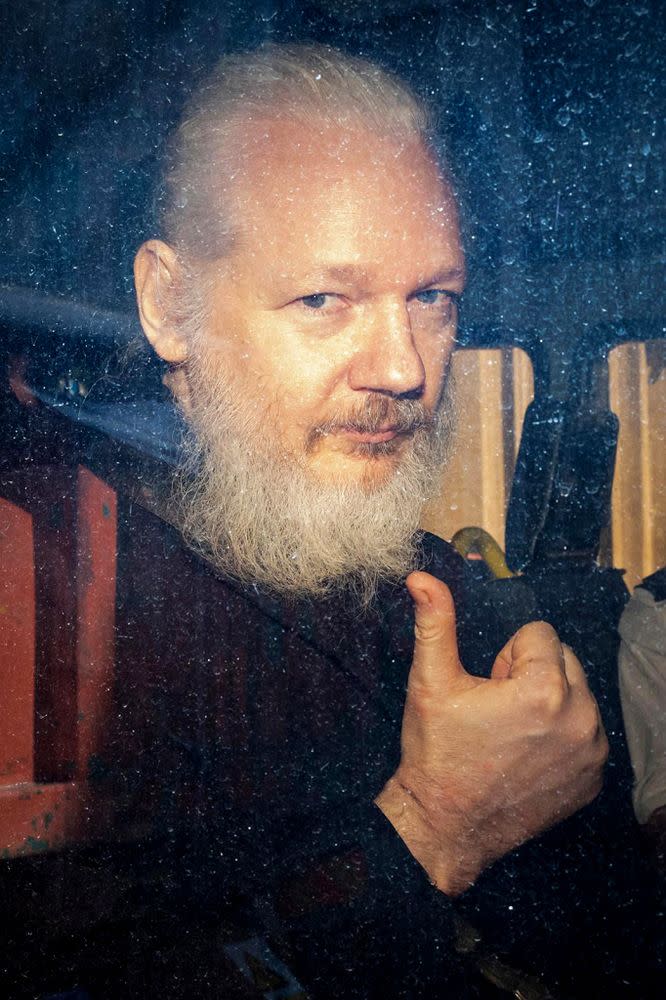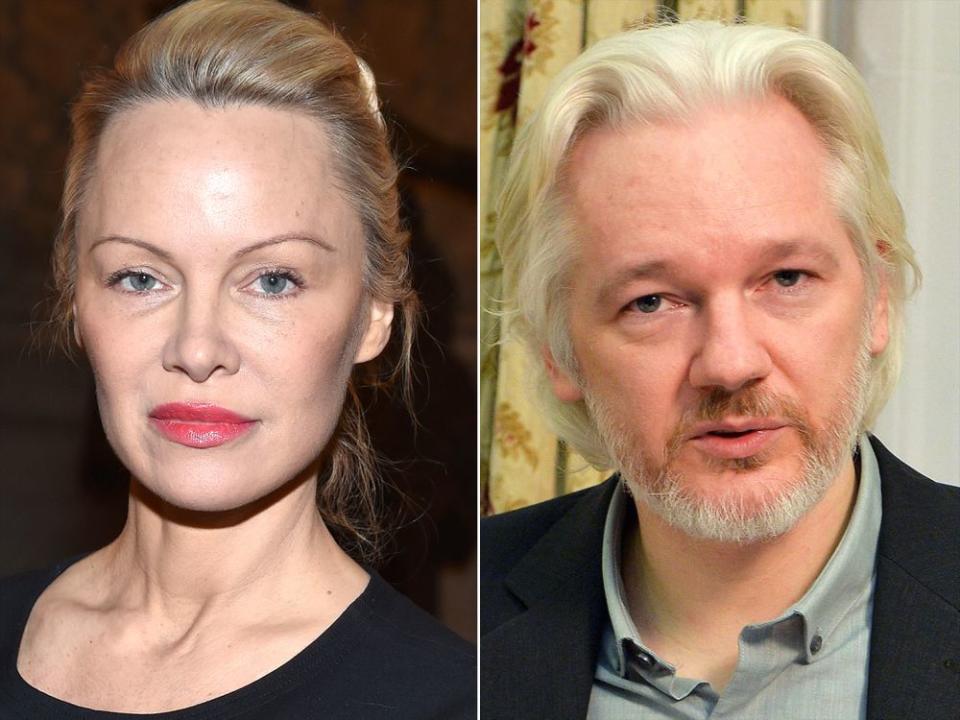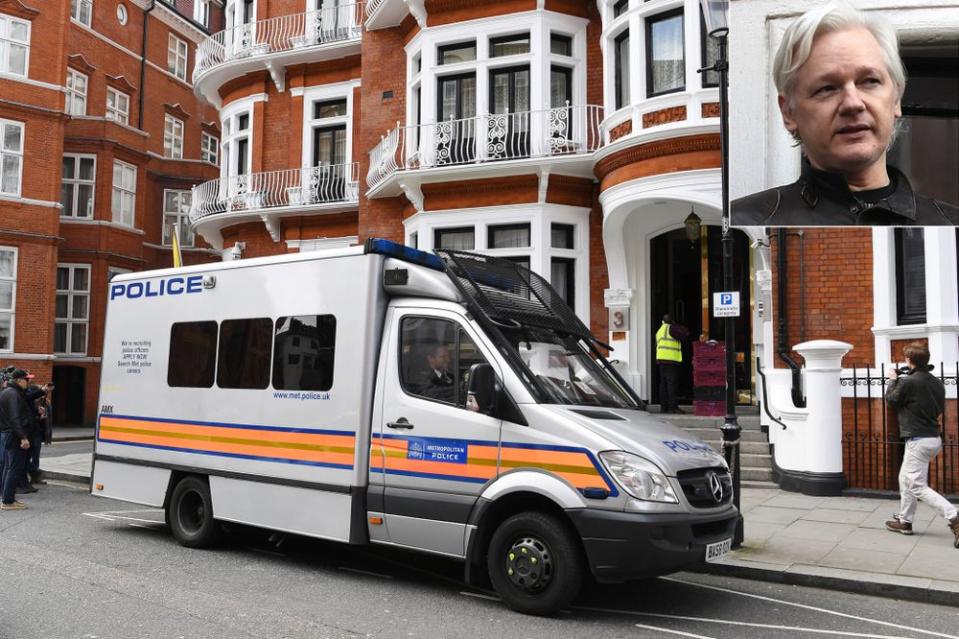WikiLeaks Founder Julian Assange Arrested in London After 7 Years Sheltered in Ecuadorian Embassy
WikiLeaks founder Julian Assange was arrested on Thursday in London and pulled from the Ecuadorian Embassy where he has been living in asylum for seven years, PEOPLE confirms.
U.K. authorities said he faces extradition to the United States for alleged “computer related offences.” The U.S. Department of Justice said he is suspected of conspiracy to commit computer intrusion and, if found guilty, faces up to five years in prison.
While Assange was set to appear in a London court on Thursday, a timeline for his handover to American law enforcement was not immediately clear.
His arrest was made possible after Ecuador’s government withdrew its asylum and invited in London’s Metropolitan Police.
Assange was initially taken into custody on a minor warrant related to a 2012 failure to surrender to the court, Metropolitan Police said. Almost immediately, however, they announced that American authorities had moved to seize him for extradition.
He appeared in court in London not long after being arrested where he was reportedly found guilty on a more minor charge of violating his bail conditions in that earlier case.
Assange’s attorney Jennifer Robinson did not immediately respond to PEOPLE’s request for comment, but she has cast Assange’s case in terms of press freedom.
Assange “is being sought for prosecution in the United States … for publishing truthful information,” Robinson said earlier this week.
“This is a very serious matter,” she said. “People have children who are 6, 7, years old [and] for their entire lives, he has been living inside that embassy, within a room, without access to medical treatment, without access to the outside world.”
In a statement via WikiLeaks, another Assange lawyer described his arrest as “bitterly disappointing” and raised the specter of a court battle over “what appears to be unprecedented effort by the United States seeking to extradite a foreign journalist to face criminal charges for publishing truthful information.”
RELATED: Pamela Anderson Begs Kanye West to Help WikiLeaks’ Julian Assange


While leading WikiLeaks, Assange, 47, has published a vast amount of classified or otherwise secret material from the American government and other high-powered officials around the world — in the name of utter transparency.
The U.S. crime of which he is accused is connected to the 2010 release of classified information facilitated by Chelsea Manning, then working as an intelligence analyst for the Army.
WikiLeak’s methods are also extremely controversial. While some of its revelations of hypocrisy or government misbehavior have been praised, WikiLeaks has been severely criticized for releasing damaging emails about Hillary Clinton’s 2016 presidential campaign which American authorities believe were first stolen by Russians. (Assange has disputed Russia was his source.)
“I think Assange has become a kind of nihilistic opportunist who does the bidding of a dictator,” Clinton said in 2017.
Video of his Thursday arrest shows Assange — now with a long grey beard — being pulled by police down the steps of the embassy and put into a police van outside. Assange could be heard saying, “You must resist, the U.K. must resist!”
Ecuadorian President Lenín Moreno said on Twitter that his government had withdrawn Assange’s asylum for “repeatedly violating international conventions.”
Actress Pamela Anderson, a friend who has long defended Assange, shared her shock on Twitter Thursday.
“He looks very bad,” she wrote. “How could you Equador? … How could you U.K.?”

Assange’s Embassy Life Before Arrest
After living in a single room for seven years with no access to the outdoors or medical treatment, Assange left the embassy as a haunted, almost ghostly figure.
“Julian has become increasingly depressed and his health is very poor due to the deficiencies of living inside for so long,” a close friend who saw Assange “a couple of weeks ago,” tells PEOPLE.
The friend says: “Previously, he had someone shopping and cooking but the new government decided to withdraw that service, so Julian had to organize something with whoever was available to bring him food, whenever they could.”
In 2016, Assange adopted a cat, who he showed off via social media. Reports have conflicted about the cat’s whereabouts now, but an Assange friend says the pet will be taken in by others close to him.
Some of those closest to him are now actually more scared for health than his freedom.
“He’s a very strong character but obviously it has a toll,” a source says of Assange “It has a physical toll, it has a mental toll, it has an emotional toll and because people think that he is strong they don’t always see that.”
“One time I was on the phone to him and he could hear seagulls in the background,” says a source. “I wasn’t even paying attention to it, but he was like, ‘Oh, seagulls!’ He sounded so wistful because he hadn’t seen or heard seagulls for so long.”
Assange is next due to appear at Southwark Crown Court in London on May 2.
The U.S. government must bring forward extradition papers by June 12.

